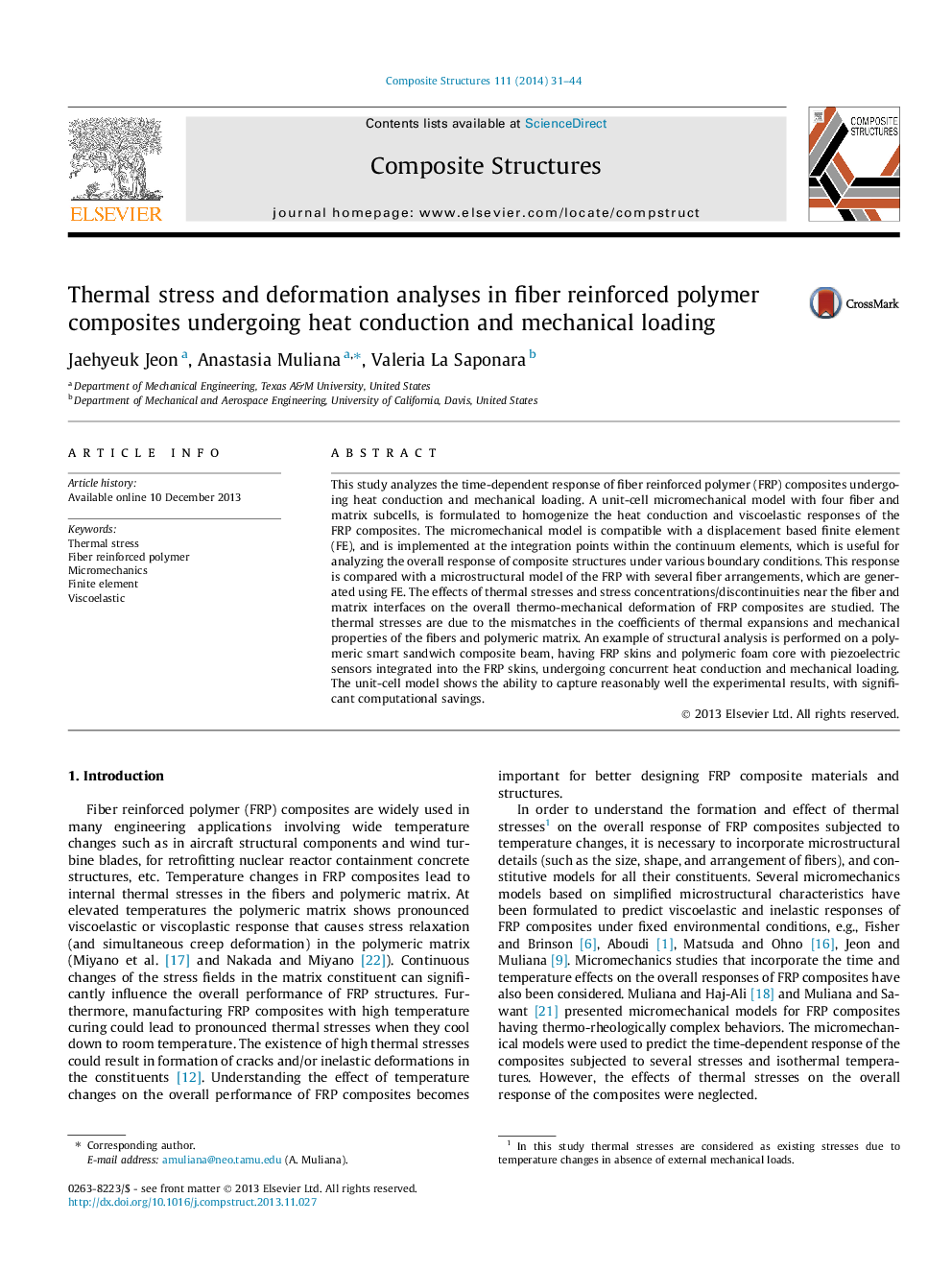| Article ID | Journal | Published Year | Pages | File Type |
|---|---|---|---|---|
| 6707756 | Composite Structures | 2014 | 14 Pages |
Abstract
This study analyzes the time-dependent response of fiber reinforced polymer (FRP) composites undergoing heat conduction and mechanical loading. A unit-cell micromechanical model with four fiber and matrix subcells, is formulated to homogenize the heat conduction and viscoelastic responses of the FRP composites. The micromechanical model is compatible with a displacement based finite element (FE), and is implemented at the integration points within the continuum elements, which is useful for analyzing the overall response of composite structures under various boundary conditions. This response is compared with a microstructural model of the FRP with several fiber arrangements, which are generated using FE. The effects of thermal stresses and stress concentrations/discontinuities near the fiber and matrix interfaces on the overall thermo-mechanical deformation of FRP composites are studied. The thermal stresses are due to the mismatches in the coefficients of thermal expansions and mechanical properties of the fibers and polymeric matrix. An example of structural analysis is performed on a polymeric smart sandwich composite beam, having FRP skins and polymeric foam core with piezoelectric sensors integrated into the FRP skins, undergoing concurrent heat conduction and mechanical loading. The unit-cell model shows the ability to capture reasonably well the experimental results, with significant computational savings.
Related Topics
Physical Sciences and Engineering
Engineering
Civil and Structural Engineering
Authors
Jaehyeuk Jeon, Anastasia Muliana, Valeria La Saponara,
